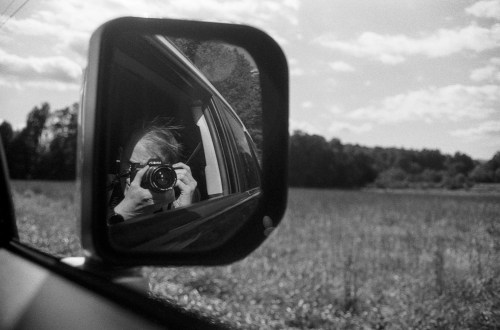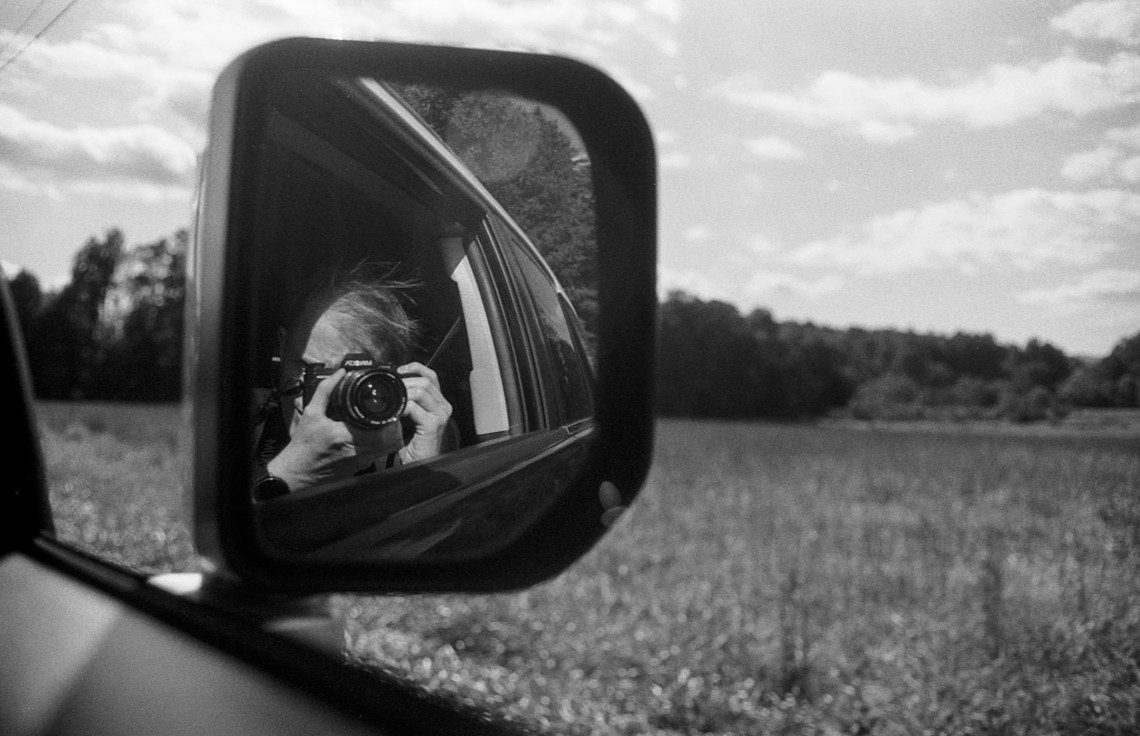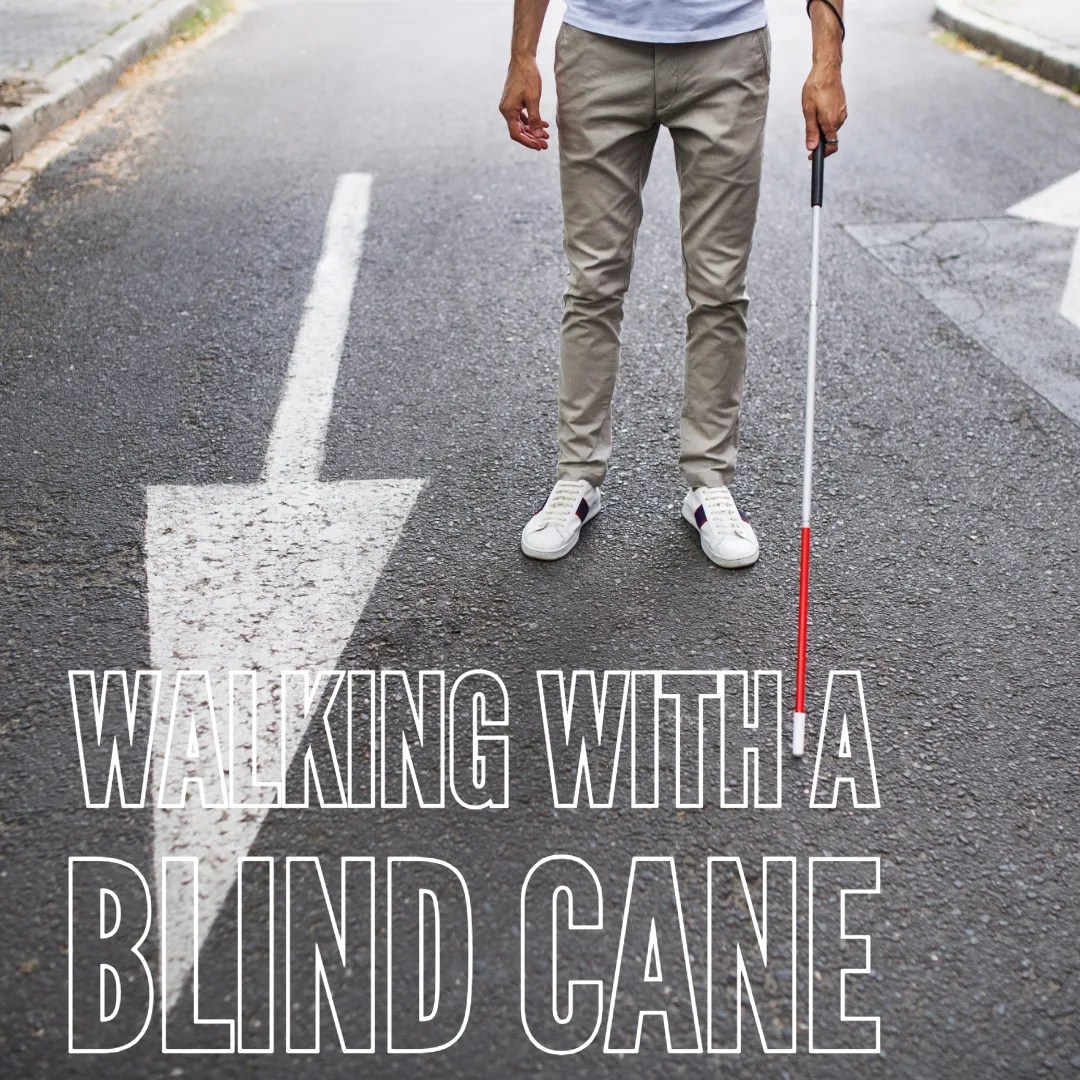-
Zeiss Ikon Contessa
If you know me at all, you probably know that I love old Zeiss Ikon cameras. They are a bear to work on and a bit fiddly at times, but all old cameras have their quirks that make them unique and endearing. The camera I am reviewing today is the later Contessa, the compact rangefinder that, although it is heavy by today’s standards, it is compact for its time, embodying a blend of innovation and classic design. These were developed in the early sixties with selenium light cells for light meters, a cutting-edge technology at the time that highlighted the ingenuity of camera engineering.
Over the years, I have acquired a few of these with working light meters and a few that didn’t work at all, and it’s fascinating to see how the functionality can vary so significantly across different models. It is very rare that they are accurate, as the passage of time often takes its toll on these delicate mechanisms. I would not recommend you rely on that alone, especially with a color film that requires accuracy; after all, achieving the perfect shot is often about timing. Black and white film, what I use the majority of the time, has a lot more exposure latitude, allowing for a bit more creative freedom in the developing process.
This particular model is accurate within a stop some days and not accurate at all on other outings, creating a sense of unpredictability reminiscent of film photography’s charm. You can sometimes revitalize these old light meters by cleaning the contacts, a rewarding endeavor for those who enjoy tinkering; each restoration feels like breathing new life into a forgotten piece of history. Cleaning these old cameras is good to do, regardless of the chance of rescuing the light meter or not, as it enhances their functionality and preserves their beauty. The main reason for this post is to talk about the amazing little lens they put in these little cameras. It has a Carl Zeiss Tessar 50mm f/2.8 lens that is sharp and takes stunning photographs, rendering details in a way that often surpasses modern lenses. As stated, I usually use black and white film, but due to the coatings on the lens, you can use any color film, allowing for vibrant and rich imagery that stands the test of time.
This particular model has accurate shutter times, smooth aperture operation, and buttery focus, creating an exhilarating shooting experience that brings joy to both seasoned photographers and novices alike. These cameras are at such a great price point, making them an accessible option for anyone interested in exploring the world of rangefinder photography. If you want to try a rangefinder before shelling out thousands of dollars on a Leica, buy one of these cameras; the value they offer is truly exceptional. You will not be disappointed in the quality of the lens and its sharpness, which can capture faint details even in less-than-ideal lighting conditions. Due to its coatings, it does provide a lot of contrast as well, delivering images with depth that draw the viewer in.
I am selling this one on eBay, but I would recommend it whether I am selling one or not; my admiration for these cameras goes beyond mere transactions. If you have any questions about the camera, leave me a comment. Or, maybe you have one handed down through the generations, each with its own stories and memories. Tell me your story, as I am always excited to hear about fellow enthusiasts who understand the passion that surrounds these wonderful machines. -
Living in the Tonto National Forest in the High Desert
In May of this year, I wrote about moving to Arizona; in fact, it was my last post. We were so busy with selling the house and the chaos that ensued and finding a place to live out here that I didn’t update the blog. We’ve been living in the Tonto National Forest for almost two months. As you might imagine, moving across the country is an arduous journey and costly.
We are still unpacking and getting life sorted out. I transferred out here and then started a new job in late August. Life has been hectic, but we are loving it. One of the major reasons we chose Arizona, other than the fact that Deana is from this great state, was its stunning natural beauty, which has offered us endless opportunities for exploration and adventure. The vast landscapes, with their unique rock formations and diverse ecosystems, have become our new playground. Each weekend, we try to set off on new adventures. The local attractions are truly spectacular, and we rarely find ourselves bored with so much to see and do.
I tell people that it is a lot like the mountainous area of South Carolina. It is a more arid climate, of course, the flora and fauna are different, but the people are a lot like they are at home. We live in a small tourist town that more than doubles in size during the summer. The ponderosa pines and mesquite trees sing with glee and give off a glorious scent. The community here is vibrant and welcoming, and we’ve already made a number of friends who have introduced us to local customs and hidden gems that we might have otherwise missed. We’ve also participated in local festivals and farmers’ markets, where we’ve sampled delicious regional dishes and handmade crafts that showcase the talent and creativity of the local artisans.
The Mogollon Rim is one of the most breathtakingly beautiful places I have ever seen in my six decades on this earth. On a particularly wet Sunday afternoon a few weeks ago, we drove up to the top of the rim, or at least as far as we could get on pavement, and looked out over all the Ponderosa pines covering the Mazatzal mountains. As we arrived at the lookout, clouds rolled in below us, offering a heavenly vista of the world below, so serene and picturesque. This experience alone made all the challenges and hardships of our move worthwhile. The tranquility of the forest, coupled with the majesty of the towering cliffs, makes this place a true sanctuary.




-
Moving on…
As you might have noticed, there has been a lack of posts lately. My photography has stalled to a memory. All of this, however, is for an amazing reason.
As Spring has sprung, we have been planning and working hard behind the scenes in the Davis household. After much research and heartfelt thought, Deana and I have decided that we are moving to Arizona, where she grew up. My amazing and beautiful wife spent her childhood in an oasis in the desert, and she loves and misses it dearly. The decision was not easy, as we will both miss family and friends here immensely, but it is a great time to move and still a seller’s market in South Carolina.
I am excited to share that I will be transferring to a similar position in the northern half of Arizona. The prospect of this move fills me with anticipation and joy. While I have a deep love for my home and family here in South Carolina, I won’t miss the allergies or the oppressive heat and 100% humidity that plagues July and August. I have always had a passion for travel and embarking on new adventures, and this move presents a perfect opportunity for that.
As previously stated in several posts, I am in the process of going blind. Our hope is that I have more than two years before I lose my vision entirely. So, while I can still see, I am looking forward to capturing the beauty of the West through my lens. The vast landscapes, the picturesque deserts, and the breathtaking sunsets are all calling to me, and I aim to photograph as much as I can.
Currently, we are in the process of finding the right buyer for our home. We have put a lot of effort into getting the house ready for sale, and we are eagerly awaiting the next steps. Until we finalize the sale and make the move, there may not be any new posts on the site. Our days are filled with work and house showings, leaving little time for writing, developing film, or taking new photographs. It has been a shocker, not having had the chance to photograph anything in a month.
All that said, as soon as the house is sold, I will be back with more updates and plan to document our week-long journey west on the blog. The excitement is palpable, and I am looking forward to sharing this new chapter with you all. Stay tuned for more adventures from the Davis household! I can’t wait!
-
Stuck
As I pen this entry, I hope it will mark the end of a series of “blind” updates for some time. Have you ever found yourself in an inescapable predicament? My dialogue will carefully omit any direct reference to my employer, a vast global entity. Before the devastating prognosis of my impending blindness, and the ensuing revocation of my driving privileges, I found fulfillment in my profession and thrived on a perfect work routine.
My earlier schedule had me traveling to a neighboring town for work, beginning at 5:00 AM and ending at 1:30 PM from Monday to Friday. My return home was typically around 2:00 PM, allowing me the luxury of a brief rest before tending to household duties and at times, preparing dinner for my wife, Deana. This routine suited us well, allowing us to enjoy our evenings together, and even catch a movie after her workday had concluded.
Following the dire revelation about my vision, I was compelled to request a transfer to a branch within walking proximity to my home. This transition was protracted, lasting a month, with three weeks in which I received no compensation. My role in the corporation pertained to merchandising—a field I had not sought academic training for nor anticipated finding enjoyable. However, my penchant for order, structure, and meticulous tasks seemed to align well with the demands of the role.
Despite my capability and experience to perform my job without sight, the company reassigned me to an in-store position, with working hours slated from 1:30 PM to 10:00 PM on arbitrary days. My wife’s schedule has her leaving for work at 8:00 AM, during which I stay with our dogs until she returns at lunch to drive me to work. Consequently, we have been deprived of the cherished evenings we once shared. My new role demands squinting at minute details, which results in intense eye strain and headaches by day’s end.
While my employer has fulfilled the legal obligations, their support has not extended beyond that. My objections to this decision are manifold. I am naturally inclined towards early mornings, valuing the ability to complete my workday ahead of time and spend evenings with my loved ones.
Pursuing alternative employment remains a viable option, yet I am faced with the dilemma that full disclosure of my visual impairment may render me unemployable. While part-time work is attainable, it would compromise my access to quality health insurance. The coverage I currently hold is excellent, but parting ways with my job or reducing hours would precipitate a twofold increase in insurance costs. My wife’s insurance plan does not cover dependents, which further immobilizes me in my current role.
My aspirations for financial support through my blog and magazine, alongside print sales, have yet to yield significant results, though I express my deepest gratitude to everyone who has engaged with my work.
Under South Carolina’s regulations, disability benefits are inaccessible to me until my vision constricts to 20 degrees or less; currently, it stands at approximately 40 degrees. The Commission for the Blind is a resource, but its primary focus is to ensure employment for the visually impaired. Despite these challenges, I am determined to persevere in the hope of a breakthrough, but the everyday struggle is real, with a mortgage and other bills aligning with the fiscal responsibilities that many of us face.
It is not my intent to lament my circumstances; however, I cannot ignore the reality of the corner I seem to be trapped in. I am contending with Septo Optic Dysplasia and Optic Atrophy, amongst a long list of other challenges, and yet I take solace in the fact that I’m still able to provide for my family—this is undeniably a positive. The unwavering support from my wife, Deana, has been nothing short of heroic, and her strength is a blessing for which I am eternally grateful.
Should anyone have practical suggestions for additional sources of income, I would be keen to hear them. We seek your ideas and assistance. While I seldom mention it, there is a tip jar situated on the right side of the blog—for those inclined to support my endeavors with the equivalent of a coffee, it would be greatly appreciated. In my forthcoming post, which you can expect on Monday, I will discuss my preferred and reasonably priced folding medium format camera.
While I have pursued photography as a business venture for several years, it has not been financially lucrative for me. The ordeal nearly overwhelmed me at times. Nevertheless, it is an endeavor that brings tranquility to my spirit. Its absence would leave a void within me — for it is intricately tied to my identity.
I am the individual who approaches others with enthusiasm about cameras, only to reveal that I am progressing towards blindness. This revelation often elicits surprise and confusion; however, I find a certain satisfaction in such reactions. People are strange, but so am I.
It is my intention to share my narrative with you, one that intertwines simplicity with complexity. I invite you to subscribe to this blog for further insights and to explore more of my photographic journey.
-
Walking With a Blind Cane
Living with vision impairment involves constant learning and adaptation, and my recent experiences have truly highlighted this journey. Participating in orientation and mobility training with a specialist from Columbia was not just an educational endeavor, but a life-affirming one. The specialist displayed a remarkable combination of professional expertise and compassionate support that has empowered me in ways I hadn’t imagined possible.
Navigating the world without full sight is fraught with potential hazards. While the technical jargon is vast, the fundamental goal remains straightforward: avoid accidents, whether with vehicles, bicycles, or obstacles on the path. Mastery of the blind cane is crucial in this respect. The various tips that adorn the cane—a marvel of simple design—are surprisingly communicative, furnishing tactile feedback about the ground underfoot and the obstacles flanking the path.
A mundane commute can be a gauntlet for those with visual impairments. My daily journey involves a half-mile trek along a sidewalk that is not always in the best of repair. Here, the cane serves as an invaluable ally, probing the terrain for perils and helping me maintain a straight course. Transitioning from sidewalk to road signifies an escalation in risk, and it is here that a careful pace and keen hearing become my guardians against the dangers that quiet electric cars, like a Tesla, might present.
The complicated intersections are a particular concern. One such crossing I regularly navigate requires traversing four lanes of traffic, set at an unusual angle, lacking the guidance of audible pedestrian signals. Here, the life-saving virtues of patience and acute listening are never more apparent. The near-silent approach of electric vehicles heightens the peril, making it essential to rely upon one’s auditory senses to a degree that those with vision might find hard to fathom.
The message I wish to impart to drivers is one of vigilance and empathy. Keep watch for those of us with canes; these are not mere accessories but vital tools signaling the presence of a visually impaired or blind person navigating the byways and thoroughfares you share. I brandish my cane not just for personal navigation and safety but also as a clear signal to you, the driver, alerting you to my presence and my needs. This cane is for depth perception when negotiating rough terrain and a visible beacon to declare my visual limitations to the surrounding traffic.
Our roads, our paths, they are shared spaces. As participants in this communal realm, we bear a collective responsibility to ensure safety for all members, especially those who confront these spaces without the benefit of sight. The kindness drivers display in being mindful of visually impaired pedestrians like myself makes an indelible difference; it makes these journeys less daunting and the world a little more accessible, one thoughtful act at a time.














